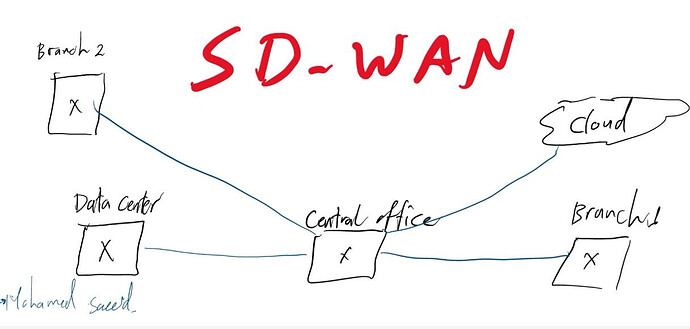Introduction
SD-WAN (Software-Defined Wide Area Network) is a technology that uses software to efficiently manage and control network connections between central offices (resources) and branch locations.
Key Concepts
1. Overlay and Underlay Networks
- SD-WAN operates as an overlay, meaning it is implemented on top of an existing underlay network.
- The underlay network refers to the physical infrastructure, such as MPLS, broadband, or LTE.
2. Traditional WAN vs. SD-WAN
- In traditional WANs (e.g., MPLS), all traffic is backhauled to the central office for security and inspection.
- Backhauling leads to bandwidth waste and reduced performance.
- SD-WAN eliminates this inefficiency by allowing direct cloud access, meaning branches can communicate directly with cloud-hosted applications like Office 365, Dropbox, and others.
3. Security and Automation
- SD-WAN provides end-to-end encryption for secure communication.
- It supports ZTP (Zero-Touch Provisioning), enabling automatic setup of new routers without engineer intervention.
- Uses IPsec tunnels to establish secure connections between routers and devices.
4. SD-WAN Architecture
SD-WAN consists of three main planes:
- Data Plane – Routers and network connections.
- Control Plane – The brain of SD-WAN, responsible for traffic forwarding decisions.
- Management & Orchestration Plane – Allows remote control, login, and supervision via a Graphical User Interface (GUI).
Practical Example: Cisco Viptela SD-WAN Components
- vManage – GUI-based configuration and supervision.
- vBond – Orchestration and Zero-Touch Provisioning.
- vSmart – Control plane, handling policy enforcement and decision-making.
- vEdge Routers – Network routers forming the data plane infrastructure.
SD-WAN revolutionizes WAN connectivity by enhancing performance, reducing costs, and improving security, making it a crucial solution for modern networking.
LinkedIn: ![]()
